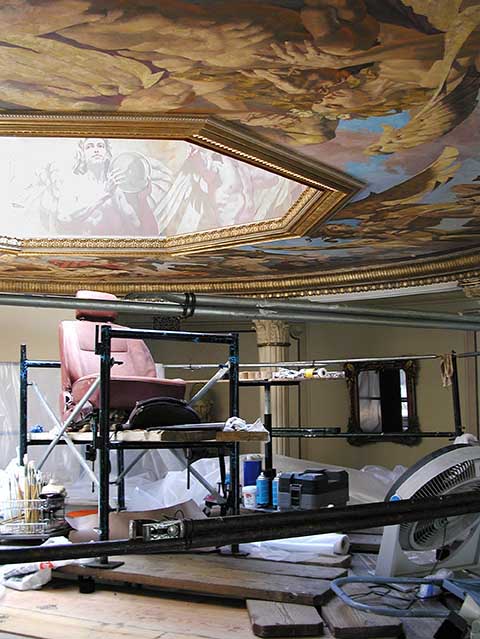Stay in Touch
Subscribe to our list to receive advanced notices about Alexey’s upcoming exhibitions, projects and initiatives as well as to receive event invitations.

I love scale. I always did. In my school, the venerable Moscow State Academic Art Institute named after V. I. Surikov, the one and only “Surikovskij” on my first semester when I brought some seven feet canvas to do a still life, a relatively entry level assignment, I was cheerfully proclaimed an “incurable gigantomaniac”, a particularly nasty lifelong artistic disease. Even at that tender age I knew that there is not such thing as “bigger better”, everything has its own size and there is nothing more insulting to the eye than a flapping oversized work with no reason to exist. Large-scale painting is a very specific field with enormous amount of things to make work for the whole thing to work. My Dad a remarkable Soviet artist Leonid Steele was a master of large-scale figure work. I was lucky to learn from the best from when I was born. And did I say I just love scale?


There’s nothing more exalting than seeing the space that supposed to intimidate. Realizing the potential and the challenge of the complex image imbedded within the space. Seeing it called to existance.
There are so many critical components to the projects of extreme nature like this one. There are so many problems that initially seem insurmountable. At some point, about a year into the work, I realized that I have to rotate the entire already developed composition six inches counter clockwise against the fixed position of the octagon skylight in the middle just to avoid sprinkler heads ending up where I didn’t need them.
I first created the set of cartoons, the full original sized drawings, then transferred them on canvases and painted in the studio, then mounted on the ceiling with all seams blending invisibly and somewhat miraculously connecting with complete precision.
One of the key factor in the success or failure of such projects is the client. I had an extreme fortune to have the most remarkable, brilliant, sharp minded and insightful client, who knew it’s just best to leave me along and then invariably bring the healthy dose of support and reinforcement whenever it was needed. The work stands as testimony of what can be done when there is this level of collaboration.
The most amazing part of such complex projects with difficult locations, light sources and points of view is that you can only fully appreciate or make judgement on them when they already fully installed and usually out of reach any more after months or even years of work. That is the true thrill.

Subscribe to our list to receive advanced notices about Alexey’s upcoming exhibitions, projects and initiatives as well as to receive event invitations.